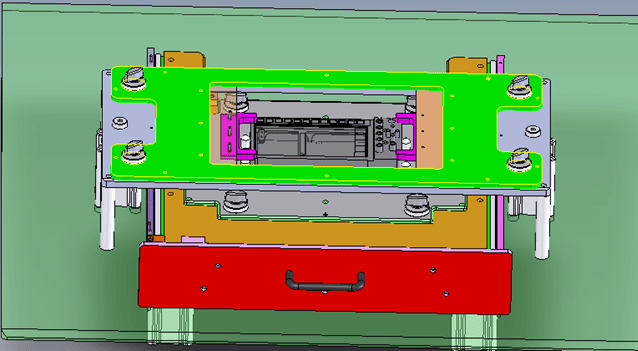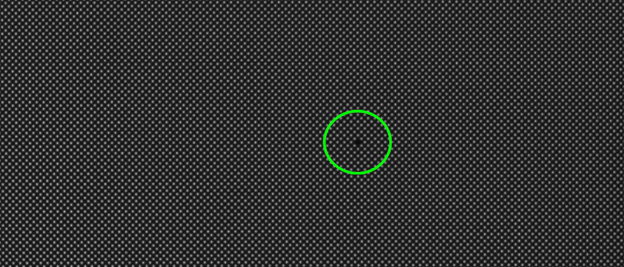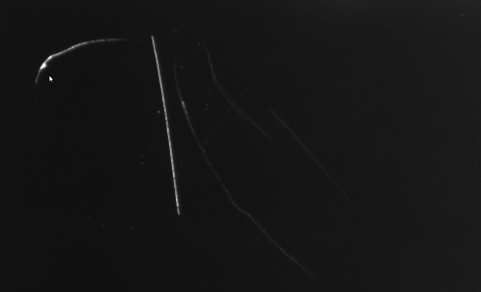DMC delivered a custom turnkey test stand for LCD screens for dashboards for an automotive company. We used NI TestStand as a test executive to perform a series of automated vision inspections on the LCD screen and surrounding tell-tale indicators. Two cameras, one color, and one monochrome were used to perform a variety of inspections. The monochrome camera provided higher resolution to check for dead pixels and scratches on the surface of the screen. The color camera was used to verify the color of tell-tale indicators and analog color bars.

Figure 2. CAD model of DUT fixturing.
How It Works
The automated test controlled a variety of lights to illuminate the automotive display screen from various angles and capture a series of images to be able to detect small scratches at any orientation. The software also commanded the device under test (DUT) to display a variety of test patterns to check for dead or stuck-on pixels. Every single pixel was validated in both the on and off states. The test stand communicated with the DUT via a CAN protocol. The screen had an analog video input that was validated by inputting a known pattern using an analog color bar generator. The color camera acquired an image, and the software confirmed the pattern’s presence.

Figure 3. Dead pixel detection

Figure 4. Illuminated scratches on a screen
Tell-tale indicator lights were commanded to be lit via CAN commands. Then, the color camera acquired an image to verify that the proper indicator turned on, in the expected location, with the expected symbol, and that the color matched the expected color. The automated system quickly sequenced through each tell-tale indicator individually to confirm all commands were functional.
Using NI TestStand provided the customer with the flexibility to modify the test sequence and parameters without requiring a high-level of programming expertise. DMC also leveraged TestStand’s built-in logging and reporting features to provide traceability data to the customer. DMC helped the customer commission the test station for the first model of DUT. The customer was able to subsequently expand the system to support additional DUTs with similar feature sets.
Conclusion
The fundamental designs, principle, and features of this particular custom system are directly applicable to the validation of the ever-increasing number and complexity of infotainment displays found in modern vehicles. Learn more about DMC’s LabVIEW Vision Application Development, Automated Test Stand Design, and LabVIEW Programming services.